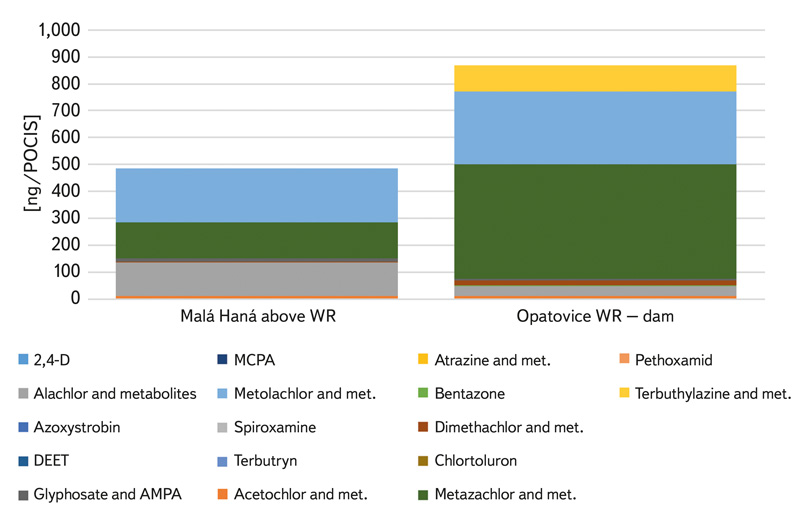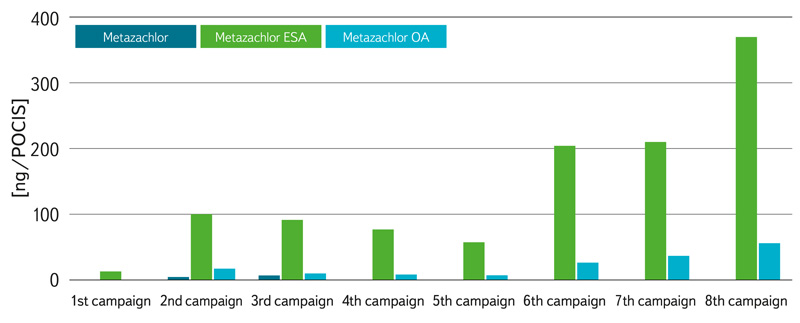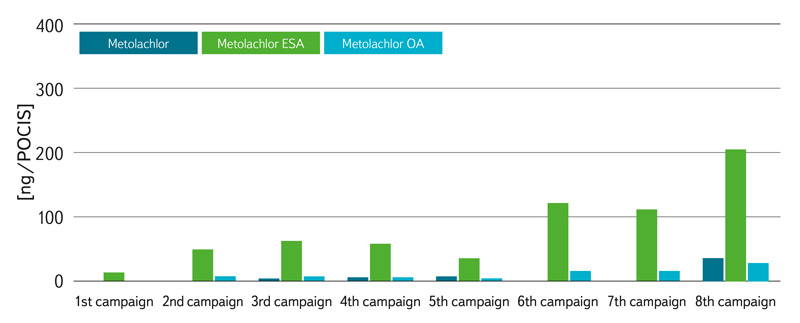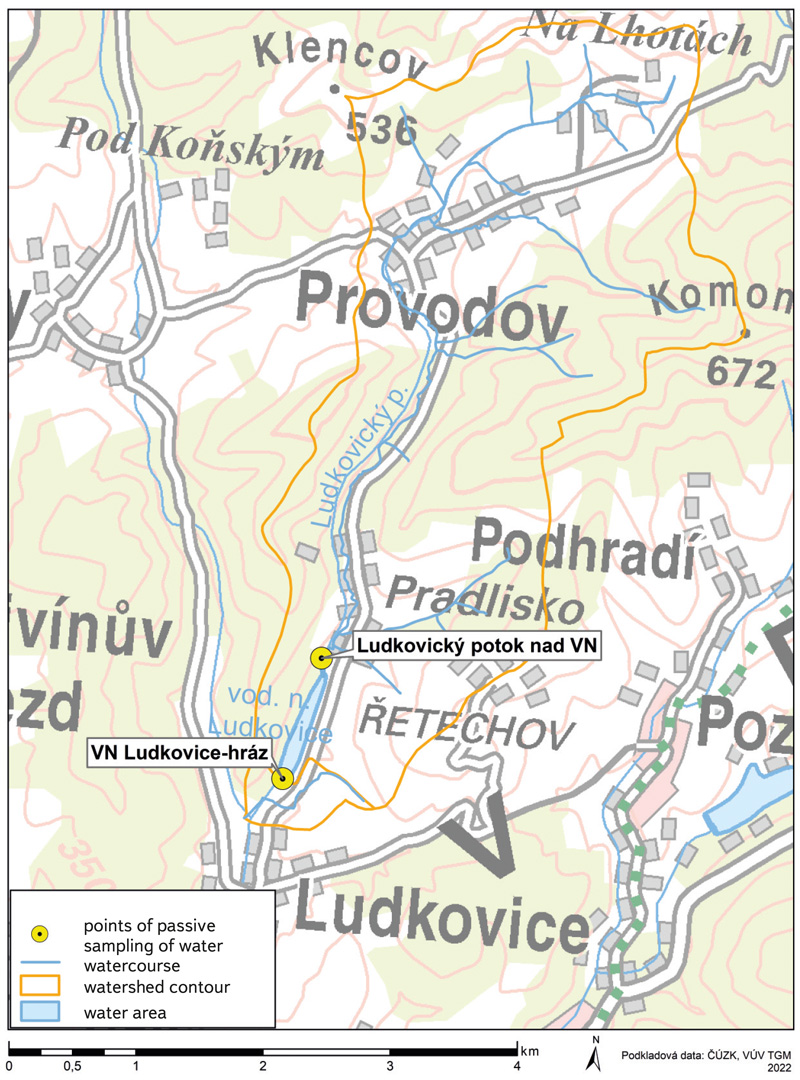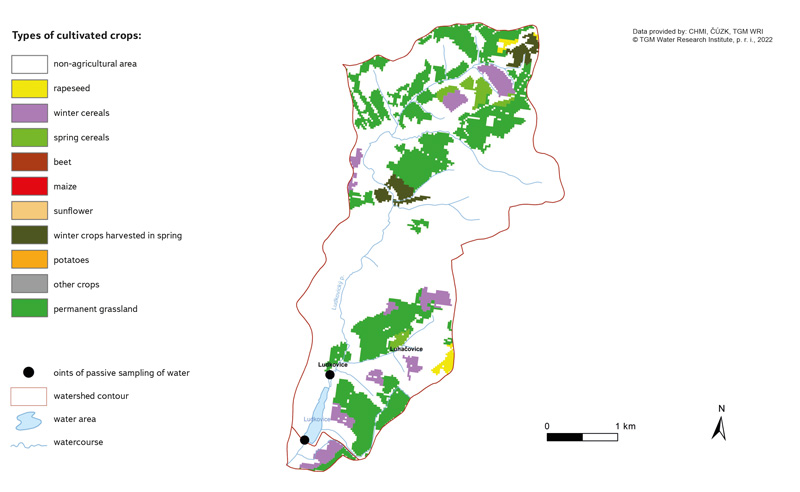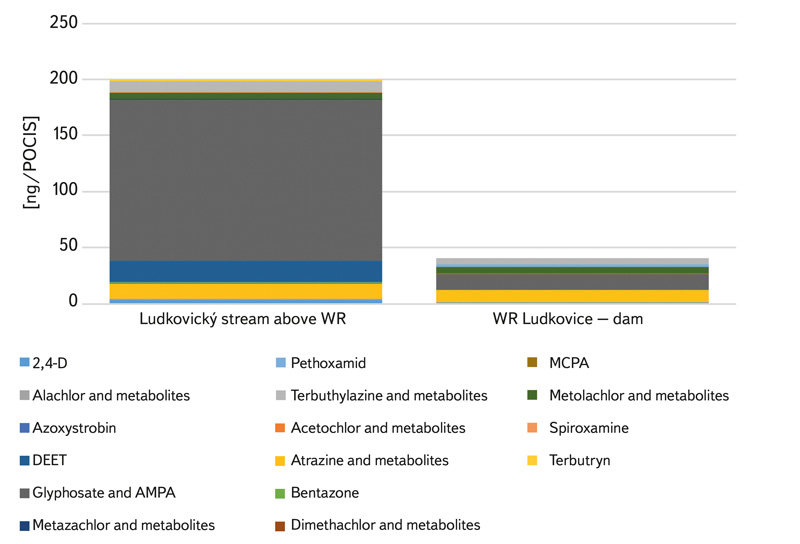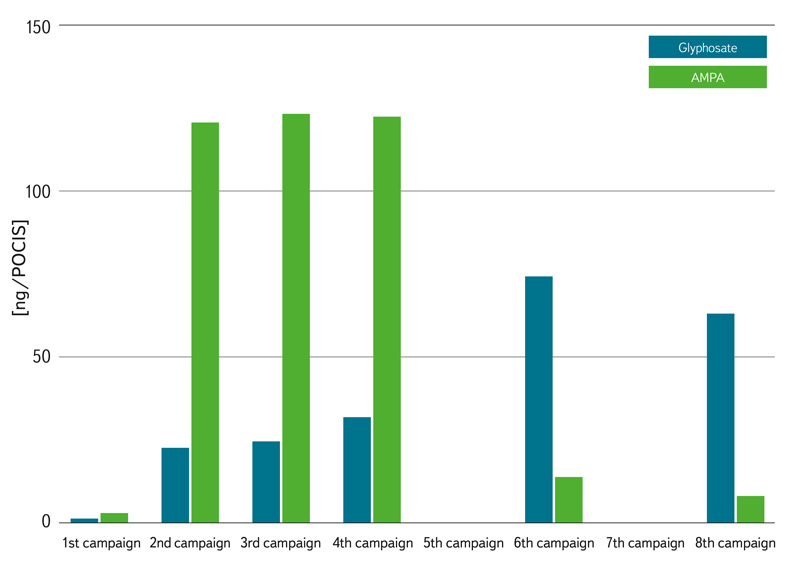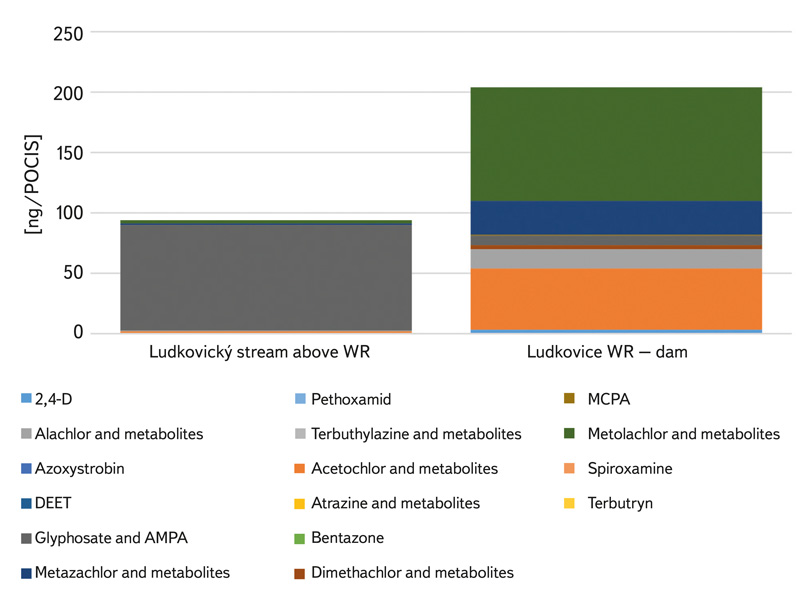ABSTRACT
Pesticides are still an important group of substances involved in surface water pollution. Their increased occurrence in watercourses in the agricultural landscape is mainly linked to rainfall-runoff conditions, types of cultivated crops, and methods of agricultural management. In order to capture these factors, passive sampling techniques were chosen for the assessment of the load of these substances in selected catchments of water supply reservoirs in the administration of Povodí Moravy State Enterprise. These techniques consist of continuous exposure for several weeks with gradual (integrative) capture of pollution on suitable sorbents. The POCIS (polar organic chemical integrative samplers) were chosen in this work – widely used samplers suitable for capturing polar organic substances. They were applied in eight consecutive sampling campaigns to cover the entire growing season. The aim was to assess the spatio-temporal dynamics (in monthly steps) of selected pesticides and their metabolites into five water supply reservoirs. Due to the scope of the obtained data, this article is focused on the presentation of the results of tributaries into water supply reservoirs Vír I, Opatovice, and Ludkovice, which were monitored in 2021. When the sampling rate Rs was published, it was possible to recalculate the pollution captured by the passive sampler to average concentration during exposure. The results showed which tributaries into the reservoirs were loaded by these hazardous substances in the individual periods of the growing season. The results can be compared with the type of crops grown in a given year.
INTRODUCTION
One of the primary activities of water management is ensuring quality surface water for drinking water treatment. In order to clarify information on anthropogenic influences on selected water reservoirs, work on the project “Study of the introduction of pesticides and other micropollutants into water reservoirs in the Morava and Dyje basins (PESPOM)” was started in May 2020 as part of the Programme of applied research, experimental development and environmental innovations – Environment for life (Prostředí pro život), Subprogramme 1 – Operative research in the public interest. Its implementation is planned until 2023. The T. G. Masaryk Water Research Institute (TGM WRI) is the only investigator of this project. The application guarantor of the project is the Department of Water Protection of the Ministry of the Environment of the Czech Republic.
In Europe, more than 150,000 chemicals are used commercially. Annually, their number increases by several thousand. For example, in 2015, this represented the consumption of 350 million tons of chemicals, of which 63 % were classified as hazardous to human health and 36 % as hazardous to the environment [1].
These substances enter the environment not only through wastewater from chemical production and other industries, but also from significant consumption by the population via municipal wastewater [2]. The active ingredients of plant protection products reach surface waters directly through erosion during rainfall-runoff events.
Many water reservoirs in the Czech Republic are located in anthropogenically affected areas. Much attention has long been paid to the basin of the Želivka river basin with the largest water reservoir (hereinafter WR) Švihov supplying drinking water to over one million inhabitants. The dynamics of pesticide leaching into surface waters in Švihov WR basin has been investigated by several authors [e.g. 3–5].
The water reservoirs in the Morava and Dyje river basins are also located in areas with significant agricultural activity and, in the case of Vír I WR, also industrial activity. Vír I WR is the largest of them (Fig. 1), coming into operation in 1957. The purpose is to ensure minimum flows, water supply abstraction, operational abstraction, electricity generation, flood protection, and improvement of flows for irrigation downstream from Brno. The total volume of the reservoir is 56.193 million m3. The most important tributary is the Svratka. The Fryšávka and the Bílý stream are important tributaries of the Svratka. The total area of the catchment upstream from the reservoir is 410.35 km2. The theoretical water retention time in Vír I WR is 154 days (5.14 months) at the average long-term flow of the Svratka (3.7 m3) if we consider the reservoir volume of 49.342 million m3 up to the spillway level and 138 days (4.59 months) in in the case of a reservoir volume of 44.056 mil m3 (useful water level). The largest human settlement is located in the upper part of the Bílý stream basin, namely the town of Polička (8,700 inhabitants). of the municipalities directly related to the water reservoir, the village of Dalečín (660 inhabitants), and further up the river Svratka, the township of Jimramov (1,200 inhabitants) have a municipal wastewater treatment plant (WWTP). Important industrial enterprises in the area include Poličské strojírny, a. s., Masokombinát Polička, a. s., Polička municipal WWTP, and Jimramov WWTP. The landscape of Svratecká vrchovina is approximately 55 % forested and has a high recreational potential. In 2021, intensive logging took place in the immediate vicinity of the reservoir as a result of a large-scale bark beetle outbreak.
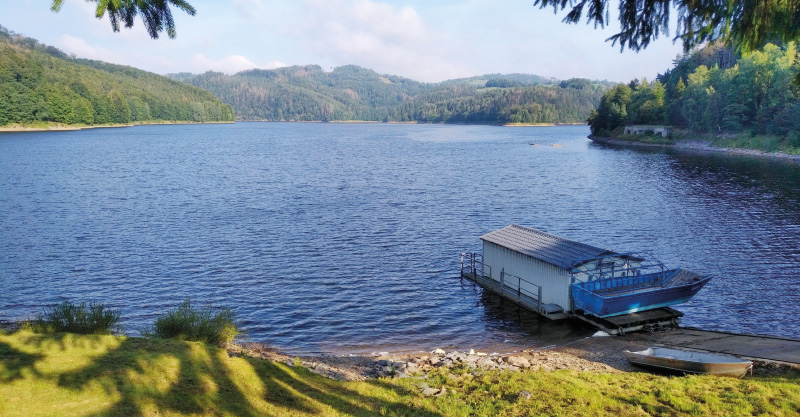
Fig. 1. Vír I water supply reservoir
Opatovice WR (Fig. 2) was put into operation in 1972. The main purpose is to ensure a source of drinking water for the population. The total volume of the reservoir is 10.634 million m3. The main tributary is the Malá Haná. The larger part of the catchment upstream from the reservoir is occupied by the forested landscape of Drahanská vrchovina, partially encroaching on the military district of Březina in the south. The upper part of the Malá Haná basin is typical of intensive agricultural activity. The catchment area is 43.87 km2. The nearest human settlement is the village of Ruprechtov (600 inhabitants) in the upper part of the Ruprechtovský stream. The WR volume up to the spillway level is 7.84 million m3. At the average flow of the Malá Haná (0.160 m3.s-1), the theoretical retention time in the reservoir is 567 days, i.e. 18.9 months.
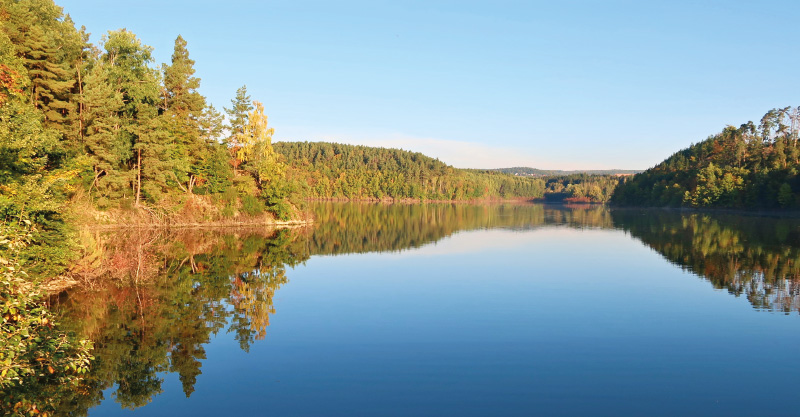
Fig. 2. Opatovice water supply reservoir
Ludkovice WR (Fig. 3) was put into operation in 1968. It is the smallest reservoir that was chosen for the project. Its total volume is only 0.69 million m3. Its main purpose is to ensure sufficient water for Luhačovice collective water supply system and a minimum flow in the stream below the dam, which is the Ludkovický stream.
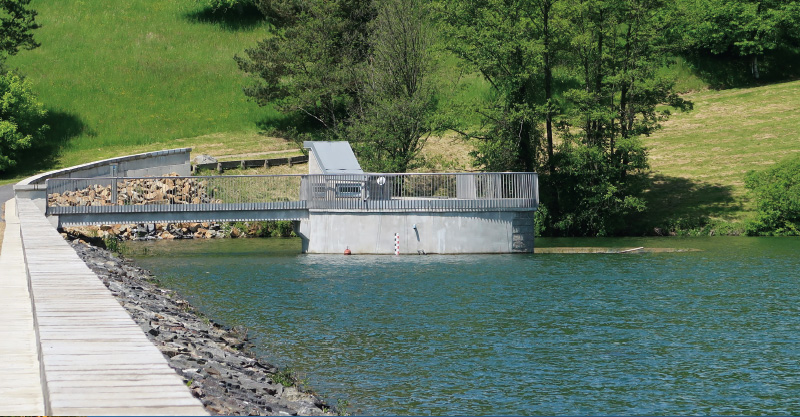
Fig. 3. Ludkovice water supply reservoir
The catchment area is 13.1 km2. The theoretical retention time of water in the reservoir is the shortest; if we consider the volume of the reservoir up to the overflow level of 0.498 million m3, the retention time is only 62 days at the long-term mean daily flow of the Ludkovický stream of 0.096 m3.s-1.
Immediately above the reservoir is a part of the village of Ludkovice, called Pradlisko. The village of Provodov (780 inhabitants) is located in the upper part of the Ludkovický stream basin. Treated wastewater from the village is transferred outside the Ludkovický stream catchment area. Its length above Ludkovice WR is about 7 km. 60 % of the catchment area is forested, the remaining area is dominated by meadows; fields make up about 10 % of the catchment area.
METHODOLOGICAL APPROACH
The dynamics of the pollution of selected tributaries to the water supply reservoirs was investigated using passive samplers. It is a continuous capture of pollutants for a specified period of time on a suitable type of sampler according to the type of monitored substances. In contrast to spot sampling, this makes it possible to gather accidental pollution (in the case of pesticides during rainfall-runoff episodes) or very low concentrations of substances that, even at low levels in water, show adverse effects on the aquatic environment and, consequently, on humans. The exposure time is chosen so that it takes place in the linear region of pollution reception by the sampler (Fig. 4).
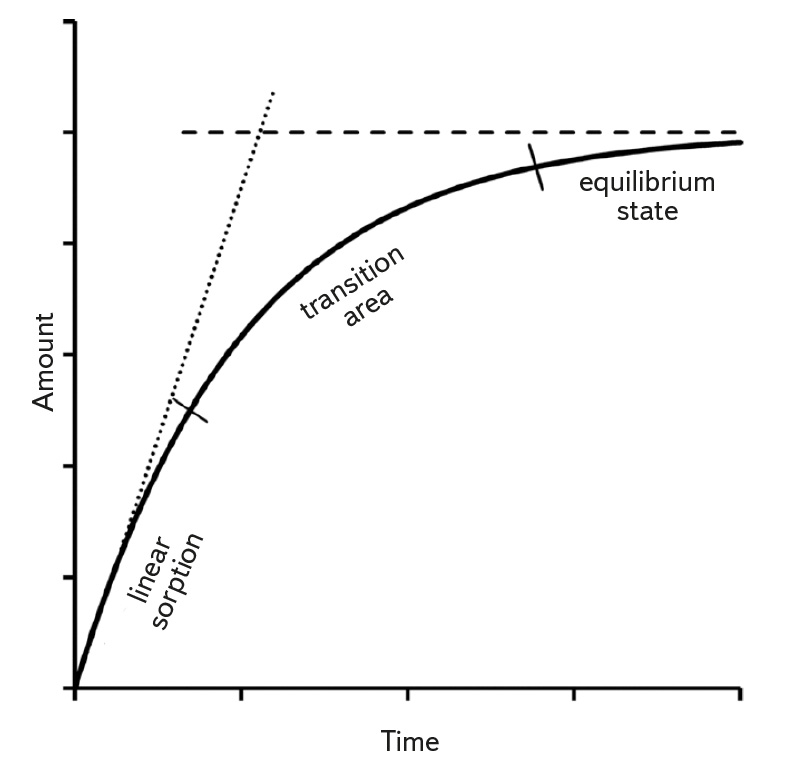
Fig. 4. General curve of the pollution capture by passive sampler depending
on the sampling time [6]
In surface waters, the exposure time is usually three weeks; due to the sampling of cleaner waters an exposure of around four weeks was chosen. Alvarez [7] also confirms that the typical exposure time in the linear region of substance uptake by a POCIS does not exceed 28 days, although for some of the substances tested by him linearity of reception was maintained even after 56 days of exposure. Sampling took place throughout the growing season from April to November, i.e. in a total of eight sampling campaigns. The exact dates of installation and replacement of passive samplers are given in Tab. 1.
Tab. 1. The installation and removal terms of the passive samplers in sampling campaign 2021

Suitable locations for placing the samplers were selected together with the employees of Povodí Moravy State Enterprise. It is necessary to choose such places where the submersion of the sampler is guaranteed for the entire duration of the exposure and unauthorized handling or theft is minimized.
The following types of passive samplers were used to capture a wide range of pollutants:
- POCIS-hlb for the capture of a wide spectrum of polar organic substances, manufacturer: E&H services, a. s., Budějovická 618/53, 140 00 Prague 4 – Krč.
- POCIS-Glyphosate for the capture of highly polar Glyphosate and its metabolite aminomethylphosponic acid (AMPA), Manufacturer: Affinisep,
10 Rue Richard Dufour, 76 770 Le Houlme, France.
The samplers were protected from mechanical damage in a stainless steel canister or casing (Fig. 5). The samplers were anchored to the riparian vegetation with a stainless steel cable. The closing profile was the inflow of raw water into the water treatment plant or, if this was not possible, in the water reservoir near the intake facility at the dam. At the main inflow and outflow from the water reservoir, the sampling canisters were equipped with a HOBO Pendant MX 2202 data logger for continuous recording of temperature and light intensity throughout the exposure period.
Before use, the samplers were stored according to the data given by the manufacturer; after exposure they were transported to the laboratory at a temperature of +2 to +4 °C and, before processing, they were stored at a temperature of -18 °C.
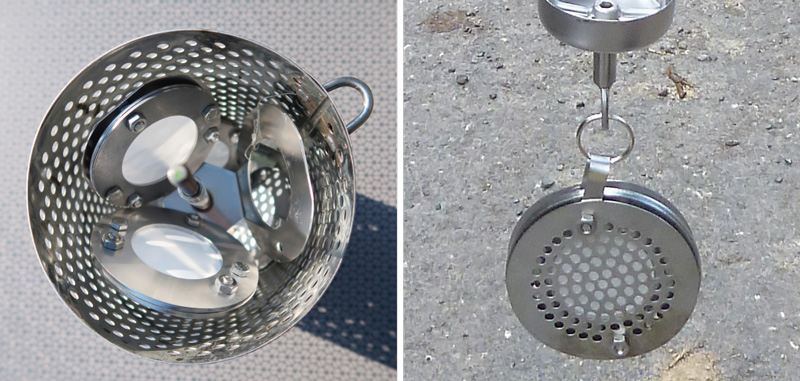
Fig. 5. Passive sampler POCIS in big canister (left) and in the casing (right)
The spectrum of verified substances included 36 active substances of plant protection products and 14 metabolites of pesticides (a total of 50 substances). The criterion for the selection of pesticides was the evaluation of the results of surface water monitoring carried out by the basin manager during 2017–2019 and significant consumption of plant protection products recorded by the Central Institute for Supervising and Testing in Agriculture (ÚKZÚZ) in the affected districts [8].
After being removed from the freezer, the exposed samplers (shown in Fig. 6) were allowed to reach laboratory temperature before processing. At the same time, they remained closed in their original packaging to prevent secondary contamination from the surrounding environment. Subsequently, they were removed from the transport package and rinsed with deionized water. In the next step, they were disassembled on aluminium foil (releasing the metal surround). The sorbent placed between the PES membranes was quantitatively transferred with deionized water to SPE columns, dried under vacuum and nitrogen, and then eluted with the necessary volume of methanol as recommended by Grabic [9]. The eluate was concentrated to a volume of 1 ml and transferred to LC-MS/MS analysis. Pesticides were measured in positive mode, pesticide metabolites in negative mode. Agilent 1290 Infinity II + Sciex X500R Q-TOF and Exion LC (Shimadzu) + Sciex Triple QuadTM 7500 were used for analysis.
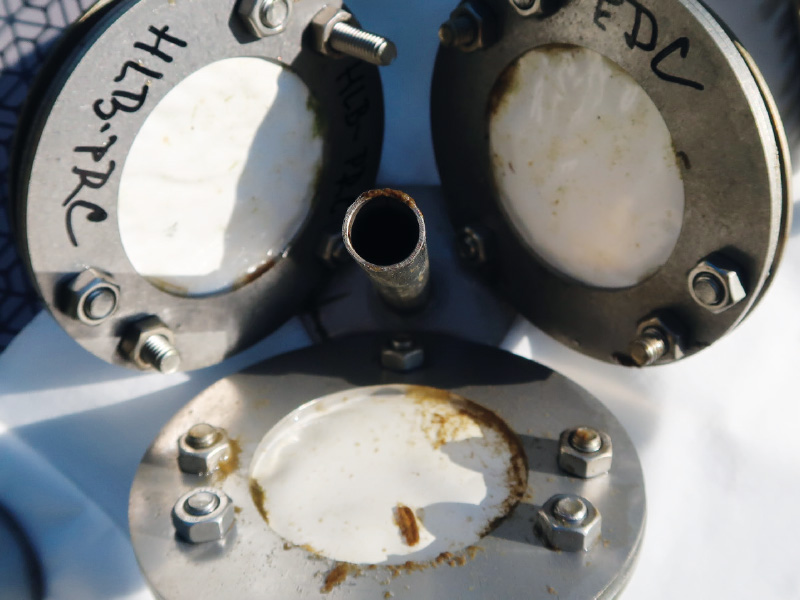
Fig. 6. Exposed passive samplers POCIS
POCIS-Gly was processed according to the procedure published by Claude [10]. After transferring the sorption media with deionized water on the frit, the sorbent was dried under vacuum and nitrogen. Elution was carried out with 8 ml of 0.1 M hydrochloric acid. The obtained extract was concentrated to dryness under a stream of nitrogen and supplemented with a mixture of methanol and water to a ratio of 1 : 1. The determination of glyphosate and its metabolite AMPA was carried out by the LC/MS/MS method in negative mode.
The resulting substance concentrations are based on 1 ml of extract.
RESULTS
Vír I water supply reservoir basin
The locations of passive sampling of the tributaries to Vír I WR are shown in Fig. 7. They include the left- and right-hand small tributaries to WR, the main tributary of the Svratka, and the outflow from the reservoir. Information on the type of cultivated crops and the area in the catchments of interest was created by the classification of multitemporal remote sensing images (RSI). Their representation in Vír I WR basin is documented in Tab. 2. Non-agricultural use prevails. of the crops, cereals are the most common, to a lesser extent oilseed rape and maize. Intensive agricultural activity takes place mainly in the basins of the left-hand tributaries of the Svratka, the Bílý stream, the Černý stream, and their tributaries.
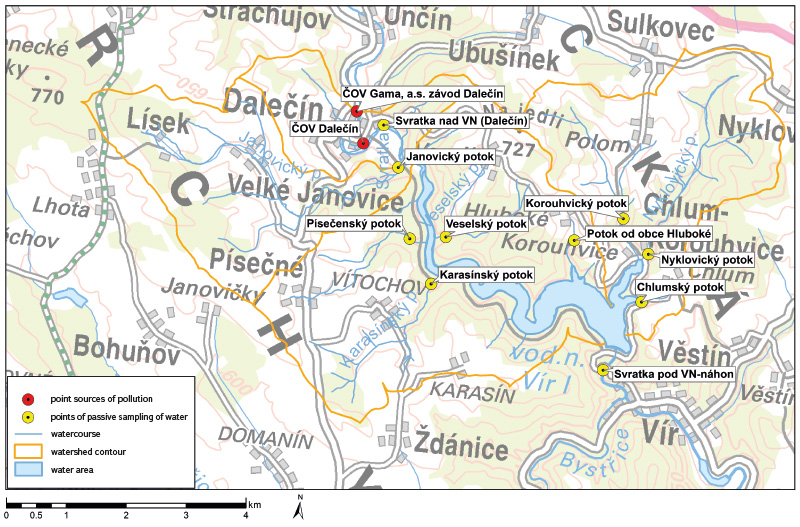
Fig. 7. Spots of passive sampling on the tributaries into Vír I water supply reservoir in 2021
Tab. 2. Cultivated crops in the river basin above Vír I water supply in 2021 from the SSE

Source: Czech Hydrometeorological Institute
Of the pesticides and pesticide metabolites, 29 substances and DEET (N,N-di-
ethyl-3-methylbenzamide), which is part of mosquito and tick repellents, were confirmed in the passive samplers. The most prominently represented were 2,4-dichlorophenoxyacetic acid (2,4-D), atrazine, metazachlor, terbuthylazine and their metabolites, and glyphosate including its metabolite AMPA (aminomethylphosphonic acid). Summary results indicating the maximum concentration of pesticides found, including their metabolites, from eight sampling campaigns are shown in Tab. 3.
Tab. 3. Maximal concentrations of pesticides and metabolites established by passive sampling on the tributaries into Vír I water supply reservoir in 2021 (in ng/POCIS)
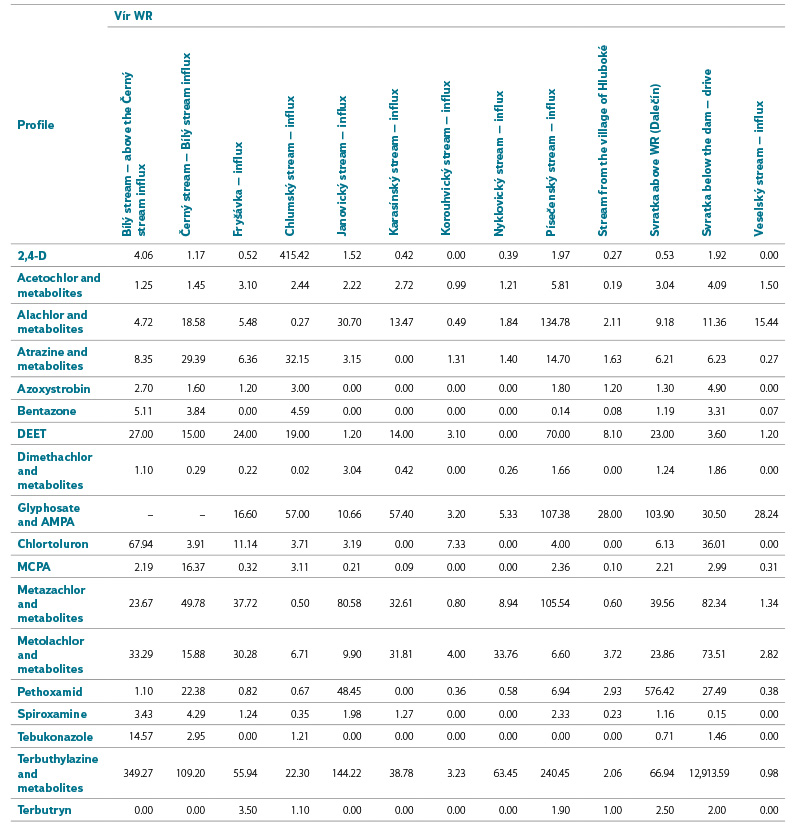
The highest concentrations of pesticides were found in the tributaries to the reservoir in the second, third, and fourth sampling campaigns (May to July 2021) (Figs. 8 and 9). The Chlumský stream was the most polluted left-side tributary, with a high content of 2,4-dichlorophenoxyacetic acid (2,4-D) in the second sampling campaign. This stream is the shortest of the monitored tributaries to Vír I WR (less than 1 km long) and originates from a small pond below the village of Chlum. 2,4-D is an organochlorine selective herbicide used on dicotyledonous weeds and applied mainly to cereals, to a lesser extent to maize and forage crops. Its significant occurrence in this small watercourse may be related to a rainfall-runoff episode that occurred in the area on 14 May 2021, with a total of 26 mm of rainfall (Fig. 10). It was the first significant spring rainfall. In 2021, spring cereals were grown in the Chlumský stream basin.
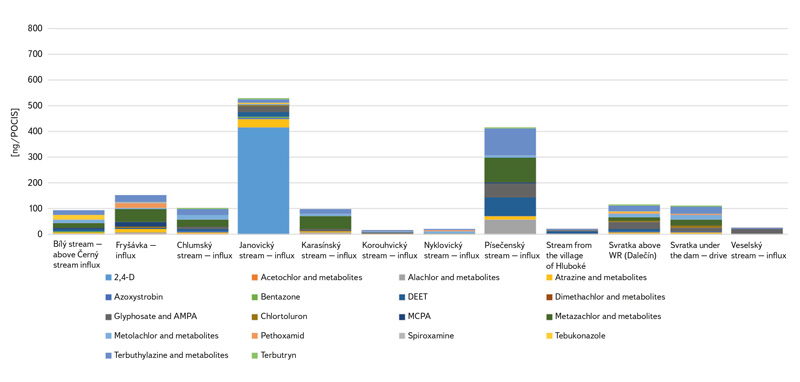
Fig. 8. Concentration of pesticide residues in the basin of Vír I water supply reservoir – 2nd sampling campaign (May 2021)
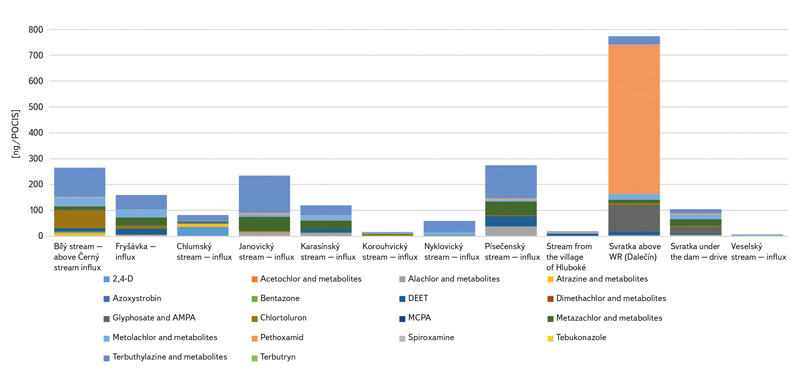
Fig. 9. Concentration of pesticide residues in the basin of Vír I water supply reservoir – 3rd sampling campaign (June 2021)
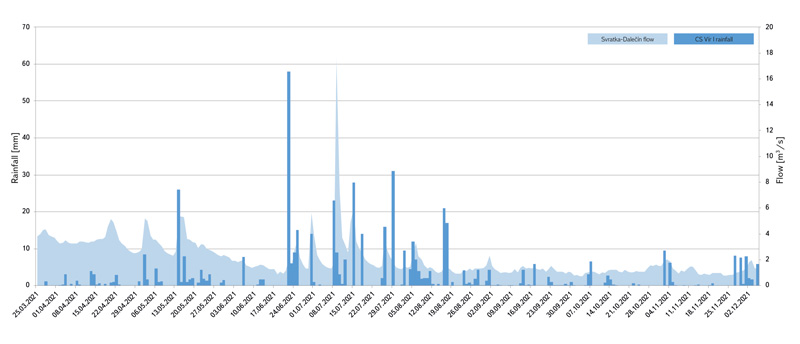
Fig. 10. Rainfall-runoff relationships in the basin of Vír I water supply reservoir in 2021
The Písečenský stream (length 3.05 river km), originating at the upper end of the Písečná village, dominated the right-hand tributaries with the variety of captured pesticides. Terbuthylazine and its metabolites, metazachlor and its metabolites and alachlor metabolites were significantly represented. Terbuthylazine, which is used to treat maize, was predominant in the form of the metabolite Terbuthylazine-2-hydroxy (Fig. 11) with a maximum in the fourth sampling campaign (7/2021). The areas sown with maize were very small in the location in 2021, namely in the uppermost part of the catchment. The „parent“ substance was thus confirmed only in minimal amounts. It is probably a load from previous years or a transformation of the original active substance during transport to the watercourse through the soil profile from a greater distance.
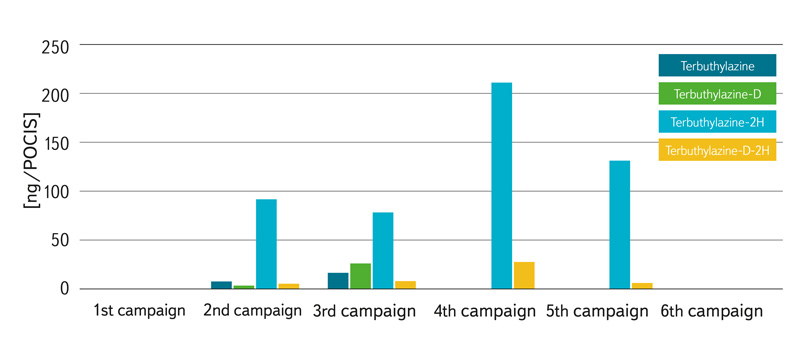
Fig. 11. Terbuthylazine and metabolites concentration dynamics in the outfall
of Písečenský stream in 2021
Metazachlor is used for oil crops that were not grown in the Písečenský stream basin in 2021. Solely the metabolite metazachlor ESA was confirmed by passive sampling in the first sampling campaign in April (Fig. 12). This indicates its leaching from applications in previous years; the dynamics of concentrations is different and not so dependent on rainfall-runoff episodes. The dynamics of alachlor was similar, the use of which has been prohibited since 2007 and was represented in surface water exclusively by the ESA metabolite with a maximum in the sixth sampling campaign (9/2021).
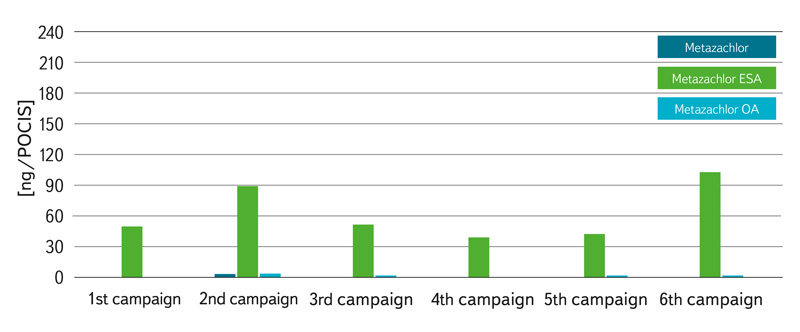
Fig. 12. Metazachlor and metabolites concentration dynamics in the outfall
of Písečenský stream in 2021
In the Svratka above WR (Dalečín) profile, the amount of pesticides captured was mostly lower than in the small left and right tributaries to the reservoir. Agriculture is particularly intensive in the Bílý stream basin in its upper part around the town of Polička, i.e. at the very upper border of the Svratka basin. Higher concentrations of pesticides in the Bílý stream are gradually diluted further downstream. The exception was the third sampling campaign with a confirmed high content of pethoxamid in the Svratka above WR (Fig. 9). This pesticide is used to treat maize and oil crops alone or in combination with terbuthylazine (e.g., BALATON). Its high capture in this sampling campaign is probably related to the heaviest precipitation event on 22 June 2022 (58 mm) (Fig. 10) and flushes from locations between the township of Jimramov and the village of Strachujov, just a few kilometres above the sampling profile.
Intensive agricultural activity around Polička with a significant proportion of cereals, maize and oilseed rape (Fig. 13) was manifested in the Bílý stream profile – above the Černý stream influx, mainly by the capture of terbuthylazine with the predominance of its metabolites with a gradual concentration increase until July 2021 in the fourth sampling campaign (Fig. 14) and chlorotoluron with a maximum in the third sampling campaign (Fig. 15).
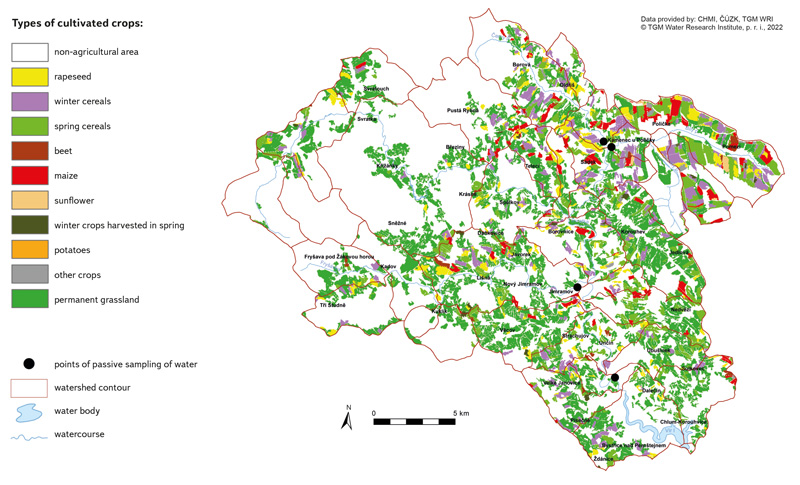
Fig. 13. Cultivated crops in the river basin above Vír I water supply in 2021 from the multitemporal shots of satellite survey of the Earth
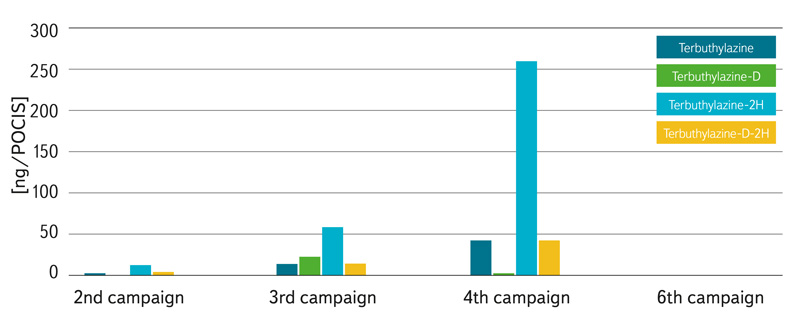
Fig. 14. Terbuthylazine and metabolites concentration dynamics in Bílý stream above the outfall of Černý stream in 2021

Fig. 15. Chlorotoluron concentration dynamics in Bílý stream above the outfall
of Černý stream in 2021
The dynamics of concentrations of glyphosate and its metabolite AMPA is interesting. It is normally used at the beginning of spring, before sowing, and at the end of summer, before sowing winter cereals. Since 1 January 2019, glyphosate has been prohibited from being used for desiccation of crops that are used for food purposes [11]. Glyphosate is relatively rapidly transformed into the AMPA metabolite depending on temperature, moisture, and soil microbial activity. The kinetics of the transformation under different conditions defines its decrease in the interval of 1.5 to 53.5 days for DT50 and 8 to 280 days for DT90. The AMPA metabolite is more stable, its persistence is 11 to 21 times greater [12]. It always depends on specific conditions, and even the type of cultivated crops [13]. At low temperatures (+5 °C), the transformation of glyphosate is 8.3 times slower than at +30 °C.
Two different cases of the dynamics of the concentrations of these two compounds can be seen in Fig. 16 and 17. In the Písečenský stream basin, the maximum concentration of the AMPA metabolite was demonstrated in the first sampling campaign in April, and in the sixth campaign in September, where mainly the parent substance was captured. In the Karasínský stream basin, glyphosate was only applied before autumn sowing.
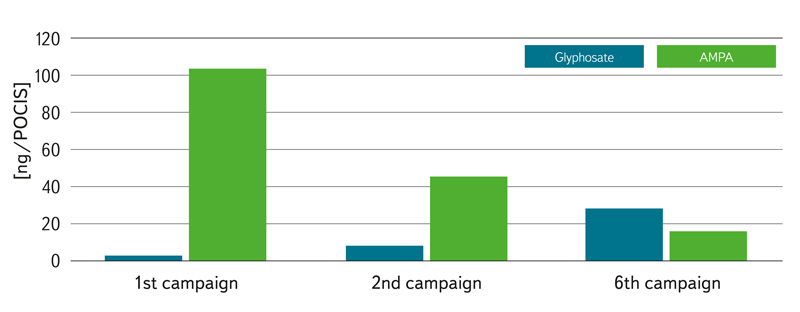
Fig. 16. Glyphosate and AMPA concentration dynamics in the outfall of Písečenský stream in 2021
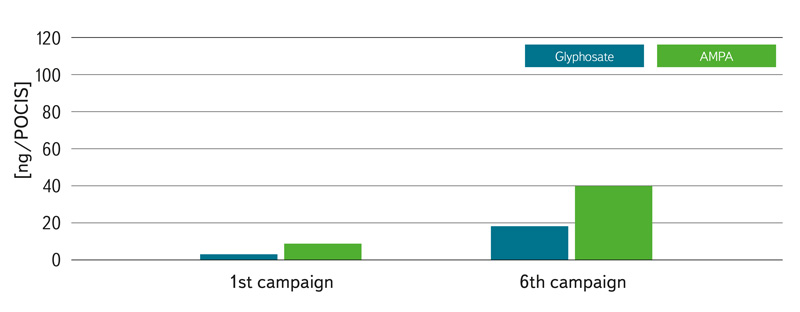
Fig. 17. Glyphosate and AMPA concentration dynamics in the outfall of Karasínský stream in 2021
In the Svratka, at the tributary to WR, glyphosate slightly prevailed over the AMPA metabolite, with a maximum in the third sampling campaign.
It is interesting that glyphosate was not completely transformed in Vír I WR and was also confirmed in outflow from the water reservoir.
Opatovice water reservoir catchment area
The locations of passive sampling on tributaries to Opatovice WR are shown in Fig. 18. The water reservoir only has two significant tributaries: the Malá Haná and the Ruprechtovský stream. The left-hand tributary of the Malá Haná is the Rakovec stream, which partly extends into the military district of Březina. Small left-hand tributaries to the WR, with a length of 300–400 m in the cadastres of Rychtářov and Pařezovice, were not included in the project due to their minimum water bearing. Information on the type of cultivated crops and the area in the basins of interest was created by classification of multitemporal remote sensing images (RSI). Their representation in the Opatovice WR basin is shown in Fig. 19 and documented in Tab. 4. Non-agricultural use makes up 81 % of the catchment area. Nevertheless, the pesticide load on the water reservoir is considerable. Cereals and oilseed rape are the most represented crops. Intensive agricultural activity takes place in the upper parts of the Ruprechtovský stream, the Malá Haná around the village of Krásensko, and on the left side of the reservoir around the villages of Rychtářov and Pařezovice.
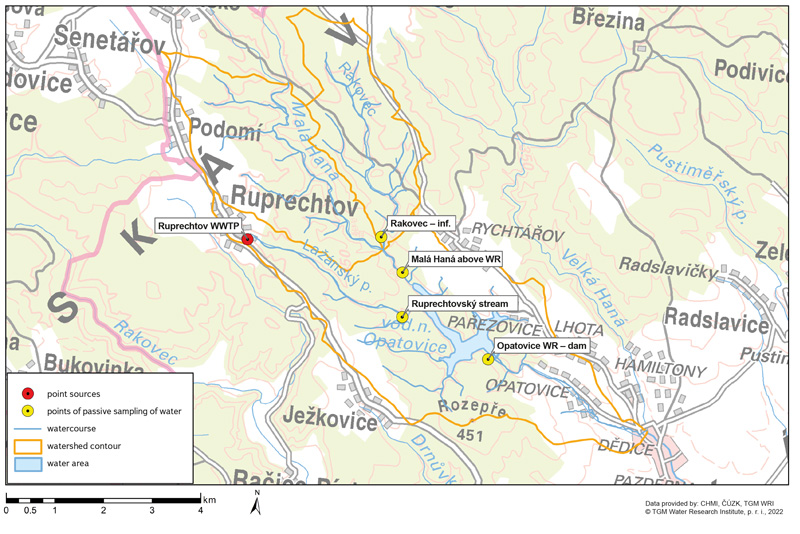
Fig. 18. Spots of passive sampling on the tributaries into Opatovice water supply reservoir in 2021
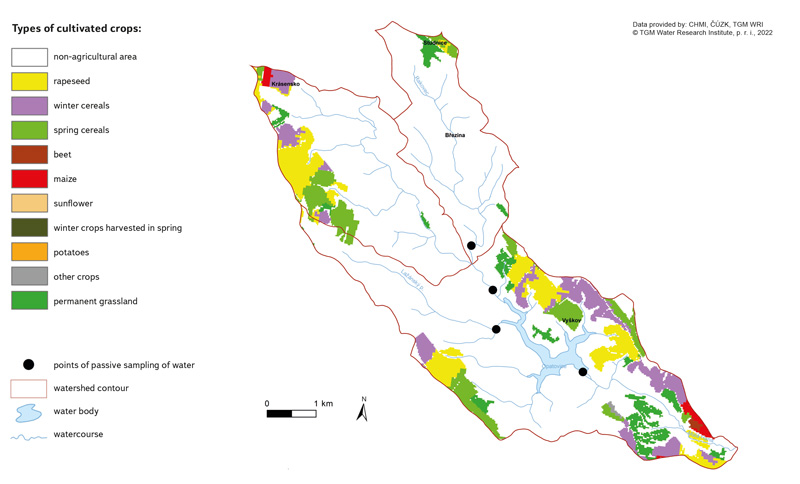
Fig. 19. Cultivated crops in the river basin above Opatovice water supply in 2021 from the multitemporal shots of satellite survey of the Earth
Tab. 4. Cultivated crops in the river basin above Opatovice water supply in 2021 from the SSE
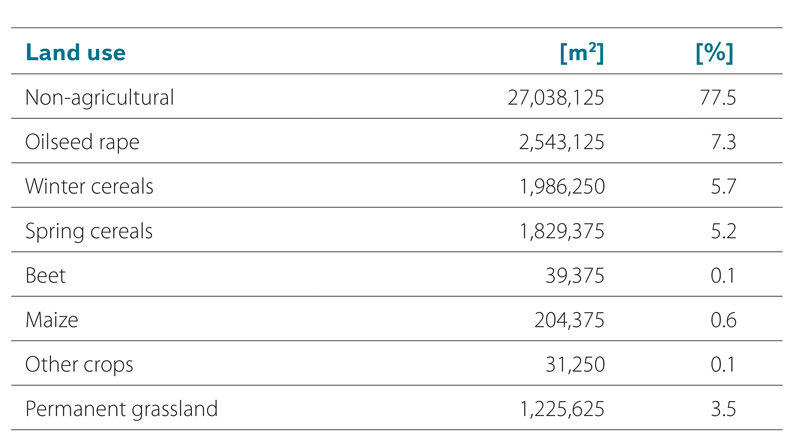
Source: Czech Hydrometeorological Institute
Of the verified pesticides and metabolites, 27 substances and DEET (N,N-diethyl–3-methylbenzamide) were confirmed in the passive samplers. Summary results indicating the maximum concentration of pesticides found, including their metabolites, from eight sampling campaigns are shown in Tab. 5. The dynamics of pesticide concentrations compared to the previous water reservoir was different. Metazachlor, metolachlor, terbuthylazine and their metabolites, glyphosate including its AMPA metabolite, and alachlor metabolites were most significantly represented (Fig. 20–23). In the Rakovec basin, agricultural activity is developed only in the upper part around the village of Studnice; passive sampling confirmed that the presence of pesticides in this watercourse is very low. The main pesticide load of the reservoir comes from the Malá Haná and the Ruprechtovský stream.
Tab. 5. Maximal concentrations of pesticides and metabolites established by passive sampling on the tributaries into Opatovice and Ludkovice water supply reservoirs in 2021 (in ng/POCIS)
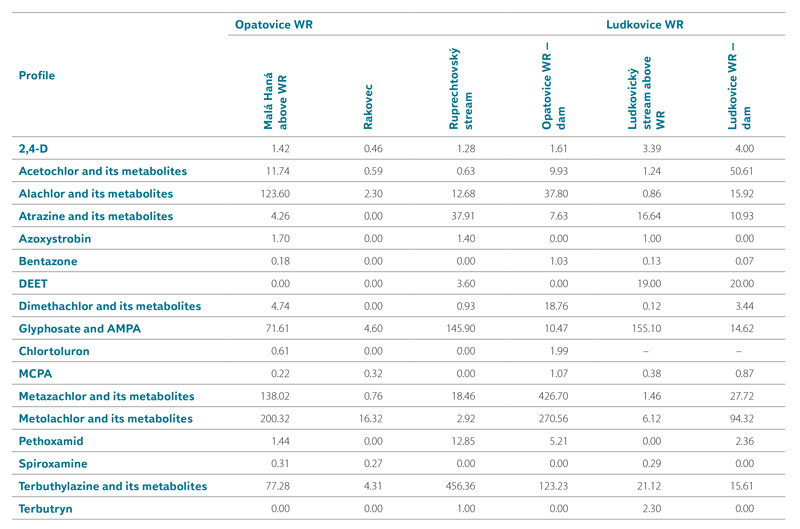
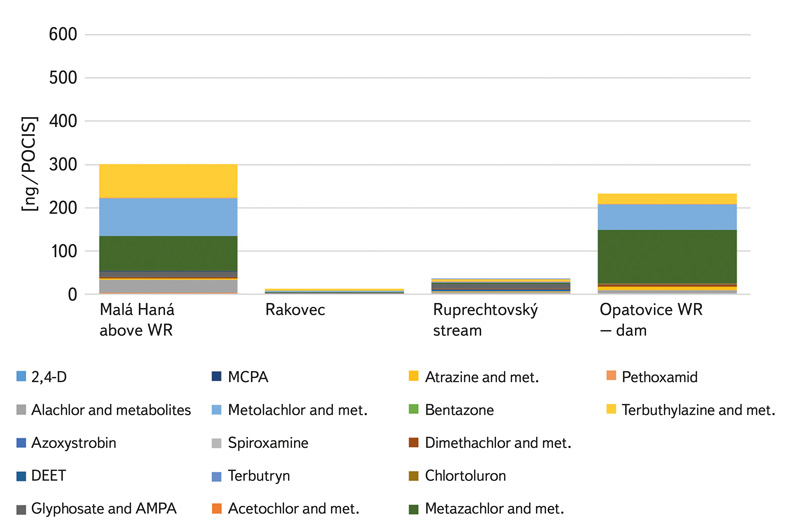
Fig. 20. Concentration of pesticide residues in the basin of Opatovice water supply reservoir – 2nd sampling campaign (May 2021)
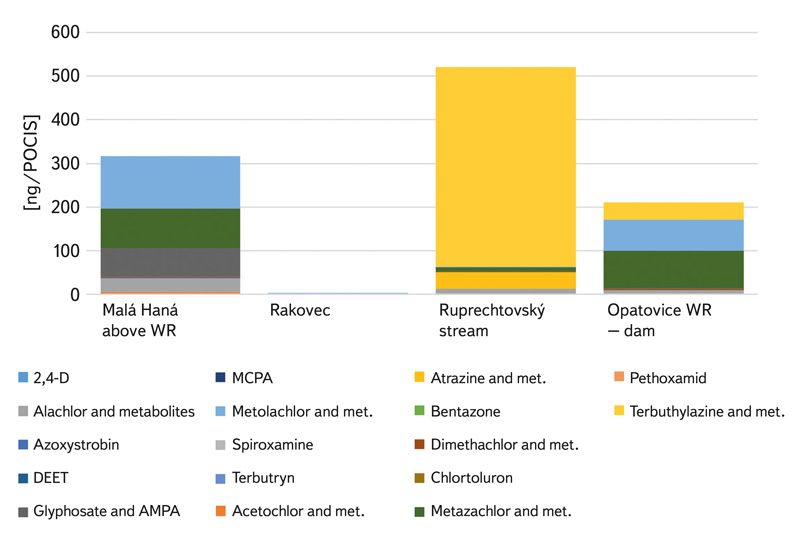
Fig. 21. Concentration of pesticide residues in the basin of Opatovice water supply reservoir – 4th sampling campaign (July 2021)
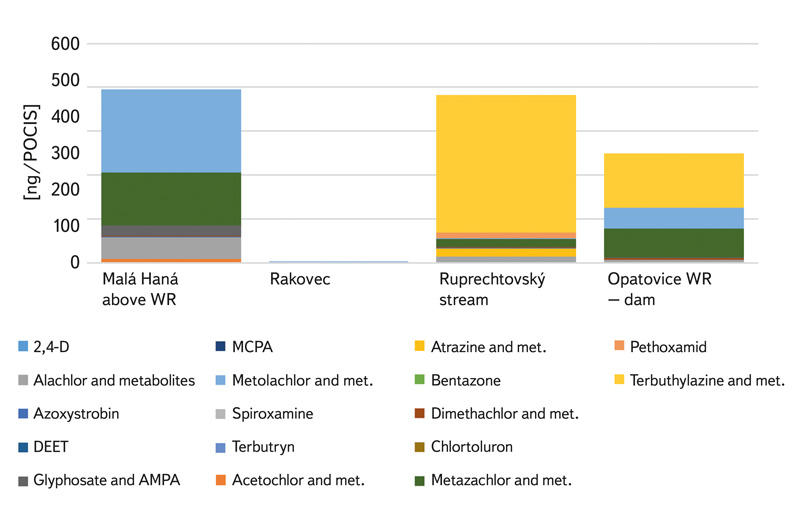
Fig. 22. Concentration of pesticide residues in the basin of Opatovice water supply reservoir – 5th sampling campaign (August 2021)
 Fig. 23. Concentration of pesticide residues in the basin of Opatovice water supply reservoir – 8th sampling campaign (November 2021)
Fig. 23. Concentration of pesticide residues in the basin of Opatovice water supply reservoir – 8th sampling campaign (November 2021)
In the April first sampling campaign, glyphosate and especially the metabolite AMPA prevailed in both of the above-mentioned tributaries; the load of other pesticides was minimal. In the second sampling campaign, increased and almost equivalent concentrations of metolachlor, metazachlor, and terbuthylazine, including their metabolites, were confirmed in the main tributary to the reservoir.
S-metolachlor applied to maize was represented almost exclusively in the form of its metabolite ESA on its way from the upper parts of the Malá Haná basin to the reservoir. It repeatedly occurred in significant concentrations in other sampling campaigns. The half-life of S-metolachlor in soil ranges from 23.6 to 40.1 days, depending on soil temperature and moisture [14]. The rate of its representation in surface water was high, although the area planted with maize was small in the Haná basin in 2021.
Metazachlor, also exclusively represented by the ESA metabolite, showed the same concentration dynamics with a gradual increase up to the eighth sampling campaign in the Malá Haná. It is used to treat oil crops, which were an important cultivated crop in this basin in 2021. According to [15], the half-life of the parent compound in the aquatic environment is 19.3 days, with only microbial processes participating in its degradation. Metazachlor is stable against hydrolysis and photolysis. Terbuthylazine, which is used to treat maize, was detected in the Malá Haná only in the second sampling campaign and to a lesser extent in the seventh sampling campaign, both times as terbuthylazine-2 hydroxy.
Terbuthylazine-2 hydroxy was only detected in the Ruprechtovský stream in the fourth and fifth sampling campaigns (July to August). In 2021, maize was not cultivated in its catchment; this late increase in its concentration in the watercourse was most probably caused by erosion due to use in previous years by intense flushes during precipitation episodes during summer occurring in late June (Fig. 24). The rainfall-runoff event beginning on 22 June 2021 was so enormous that the passive samplers of the third sampling campaign were torn off and lost, even though they were fixed to a tree trunk with steel cable.
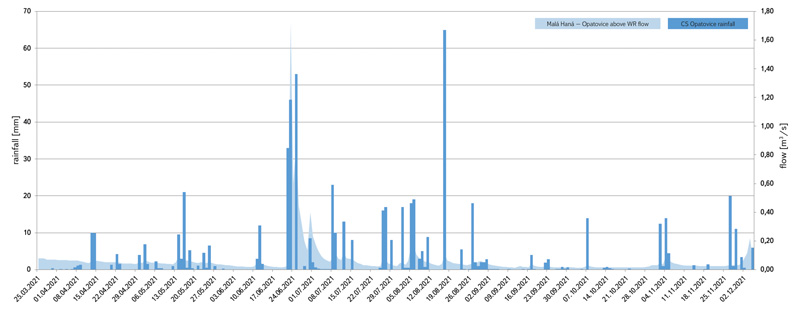
Fig. 24. Rainfall-runoff relationships in the basin of Opatovice water supply reservoir in 2021
For technical reasons, it was not possible to place passive samplers in the stream of raw water at the treatment plant in the village of Lhotka. Therefore, they were placed in a water reservoir near the outlet tower with the samplers submerging to a depth of 3–4 m below the surface. The concentration of pesticides in this location has gradually increased since the sixth sampling campaign (from 9/2021). Fig. 25 and 26 show the dynamics of concentrations of the two most significantly represented metabolites, metazachlor and metolachlor. Concentrations increased significantly in autumn sampling campaigns.
On the other hand, increased concentrations of glyphosate and the metabolite AMPA at the tributary to Opatovice WR were not manifested in the reservoir near the dam during the entire sampling season. However, it should be borne in mind that the theoretical retention time of water in the reservoir is over 1.5 years.
 Fig. 25. Metazachlor and metabolites concentration dynamics at the dam
Fig. 25. Metazachlor and metabolites concentration dynamics at the dam
of Opatovice water supply reservoir in 2021
 Fig. 26. Metolachlor and metabolites concentration dynamics at the dam of Opatovice water supply reservoir in 2021
Fig. 26. Metolachlor and metabolites concentration dynamics at the dam of Opatovice water supply reservoir in 2021
Ludkovice water reservoir catchment area
Ludkovice WR has only one tributary – the Ludkovický stream. The second sampling profile was the reservoir in close proximity to the outlet tower at the dam (Fig. 27). Information on the type of cultivated crops and the area in the catchments of interest was created by the classification of multitemporal remote sensing images (RSI). Their representation in the WR basin is shown in Fig. 28 and documented in Tab. 6. Non-agricultural use makes up 91.7 % of the catchment area. of the crops, winter cereals were the most represented in 2021.
 Fig. 27. Spots of passive sampling on the tributaries into Ludkovice water supply reservoir in 2021
Fig. 27. Spots of passive sampling on the tributaries into Ludkovice water supply reservoir in 2021
 Fig. 28. Cultivated crops in the river basin above Ludkovice water supply in 2021 from the multitemporal shots of satellite survey of the Earth
Fig. 28. Cultivated crops in the river basin above Ludkovice water supply in 2021 from the multitemporal shots of satellite survey of the Earth
Tab. 6. Cultivated crops in the river basin above Ludkovice water supply in 2021 from the SSE
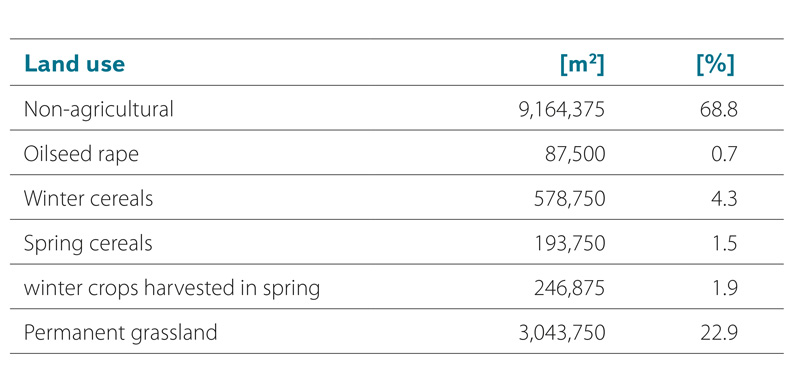 Source: Czech Hydrometeorological Institute
Source: Czech Hydrometeorological Institute
Of the verified pesticides and their metabolites, 24 substances and DEET
(N,N-diethyl-3-methylbenzamide) were confirmed in the passive samplers. The vast majority of them (with the exception of glyphosate) were detected only in low concentrations, both at the inflow and at the outflow of the reservoir, even though this basin also experienced several significant rainfall-runoff events in the summer. Summary results indicating the maximum concentration of pesticides detected, including their metabolites, from eight sampling campaigns are shown in Tab. 5. The supply of pesticides to the reservoir by the Ludkovický stream remained unchanged from the second to fourth sampling campaigns (Fig. 29). Glyphosate or its metabolite AMPA dominated in the initial sampling campaigns. Glyphosate as the parent compound was confirmed in the Ludkovický stream before the sowing of winter cereals in the sixth sampling campaign and, surprisingly, also in the eighth sampling campaign in November (Fig. 30).
 Fig. 29. Concentration of pesticide residues in the basin of Ludkovice water supply reservoir – 2nd sampling campaign (May 2021)
Fig. 29. Concentration of pesticide residues in the basin of Ludkovice water supply reservoir – 2nd sampling campaign (May 2021)
 Fig. 30. Glyphosate and AMPA concentration dynamics in the outfall of Ludkovický stream above Ludkovice water supply reservoir in 2021
Fig. 30. Glyphosate and AMPA concentration dynamics in the outfall of Ludkovický stream above Ludkovice water supply reservoir in 2021
In the reservoir near the dam, increased concentrations of pesticides were detected only in the sixth sampling campaign in September (Fig. 31). Metolachlor metabolites ESA and OA were most abundantly represented, without the presence of the parent substance. Metolachlor is used to treat maize. However, it was not cultivated in the catchment area that year. Simultaneously, significant concentrations of acetochlor metabolites, the use of which has been banned for ten years, were identified in this campaign. Metabolites of original substances from applications in previous years were captured by the passive sampler, probably due to the autumn circulation in the reservoir between the epilimnion and the hypolimnion.
 Fig. 31. Concentration of pesticide residues in the basin of Ludkovice water supply reservoir – 6th sampling campaign (September 2021)
Fig. 31. Concentration of pesticide residues in the basin of Ludkovice water supply reservoir – 6th sampling campaign (September 2021)
The third important herbicide identified in the reservoir by the sixth sampling campaign was metazachlor, or again only its metabolites ESA and OA. This herbicide is used to treat oil crops. Given that neither metazachlor nor its metabolites were confirmed by passive sampling in 2021 at the tributary in the Ludkovický stream, it is also a matter of capturing pollution from previous years originating from deeper layers of the water column during their circulation in the reservoir.
Conversion to average concentration in a watercourse
The amount of pesticides captured by a POCIS can be converted to an average concentration during the exposure time (CTWA) if the sampling rate Rs is known for the substance and the type of passive sampler. In the case of POCIS for polar organic substances, the following equation applies to the conversion [16]:

where: Nt is the amount of substance captured by the sampler in ng
Rs sampling rate in l.day-1
t sampler exposure time in days
The resulting CTWA concentration is expressed in ng.l-1.
The sampling rate is determined by calibration tests, most often in laboratory conditions. For our CTWA calculations, we used the methodological work of Grabic et al. [16]. Its great advantage is that the calibrations of the POCIS were carried out in field conditions on Czech rivers in the spring and autumn seasons. Using equation (1), it was possible to calculate the time weight average concentration CTWA and, knowing the hourly flows at the main inflow to the water reservoir, the substance balance of pollution for selected pesticides for the entire period of passive sampling by the sum of partial balances from each sampling campaign. The results are shown in Tab. 7.
Tab. 7. Results of the recalculation of the concentrations from passive samplers on the pesticide load by the main tributary into the water supply reservoir
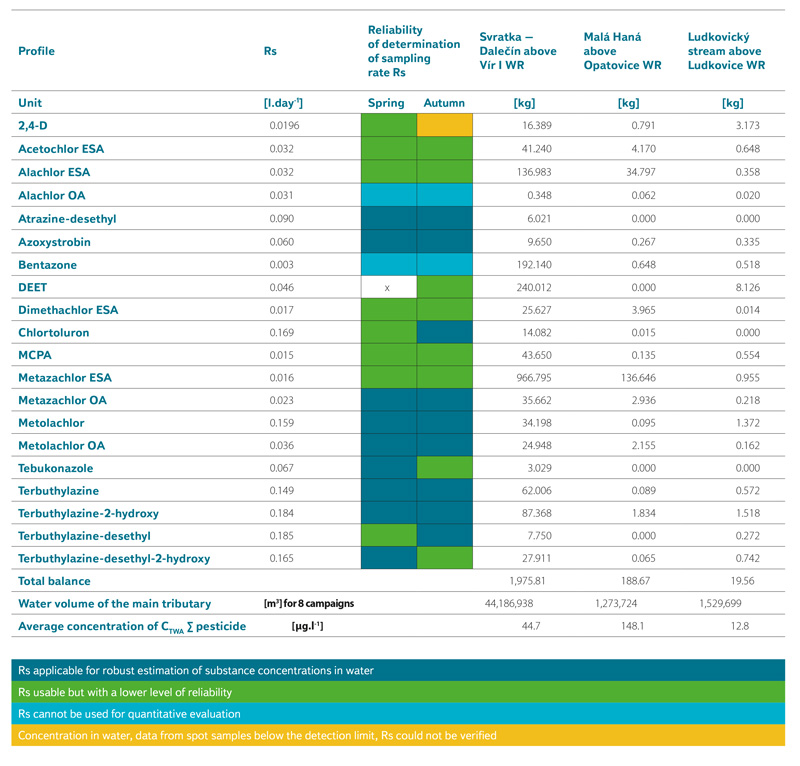
The average CTWA concentration for the sum of pesticides was calculated from the total balance of pesticides and the total volume of water that flowed through the given profile during the application of the passive samplers. The accuracy of calculating the average concentration in the watercourse is given by the accuracy of deriving the sampling rate Rs per passive sampler. Therefore, in this case, CTWA ∑ PES cannot be viewed as the actual total concentration of pesticides in the watercourse because some values of Rs are usable according to the work of Grabic [16] only with a lower degree of reliability, as shown in Tab. 7 and the notes below it. This applies especially to metaza-chlor ESA, bentazone, DEET and alachlor ESA, which were the most significant from the balance point of view. However, it allows us to compare the level of pesticide load between water reservoirs. The results show that Opatovice WR is the most loaded with pesticides.
DISCUSSION AND CONCLUSION
At nine tributaries to Vír I WR, three tributaries to Opatovice WR, and the tributary to Ludkovice WR, the dynamics of concentrations of 36 active substances of plant protection products and 14 metabolites of pesticides were monitored in monthly steps during the entire growing season. In Vír I WR basin, significant tributaries of the Svratka were also included in the passive sampling: the Fryšávka, the Bílý stream, and the Černý stream. At all three water supply reservoirs, the outflow from the reservoir was also monitored in this way. It was possible to interpret the results in connection with the hydrological and climatic conditions as well as the composition of the cultivated crops in the given locations.
A total of 29 substances were confirmed in passive samplers in Vír I WR basin. The concentration of pesticides had an increasing trend from the second to fourth sampling campaigns. The application of plant protection products is most relevant in this period. In addition, from the end of June to the second half of July, heavy torrential rains were fully manifested in the area. The representation of parent substances of plant protection products was rather minor, with ESA metabolites predominating; in the case of terbuthylazine as an active substance, it was the terbuthylazine-2-hydroxy metabolite. From the left-hand tributaries of Vír I WR, the unnamed stream from the village of Chlum (called the Chlumský stream in this article) was significantly polluted by 2,4-dichlorophenoxyacetic acid, used to treat cereals. The largest erosional flush occurred in the nearby Nyklovický stream, but with a smaller negative response to water quality than in the Chlumský stream.
On the other hand, the Korouhvický stream, the stream from the village
of Hluboké, and the Veselský stream were minimally loaded with pesticides.
Of the right-hand tributaries, pesticides were significantly represented in the Janovický stream and, in particular, the Písečenský stream, in which concentrations above 100 ng/POCIS were confirmed for three substances. They also included alachlor ESA metabolite. Alachlor was in long-term use from 1975, but since 2006 its use has been banned. In the Písečenský stream, its occurrence was the largest of all verified locations. So the load caused by its former use is still visible.
Intensive agricultural management with a diverse composition of cultivated crops also had a negative effect on the water quality of the Bílý stream below Polička. In the main tributary to WR, in the Svratka, concentrations of pesticides were mostly lower than in other small tributaries, probably due to the dilution of the load from the upper parts of the catchment. The exception was the third sampling campaign with a confirmed high content of pethoxamid, which is used to treat maize. The dynamics of concentrations in the outflow from Vír I WR was different. The concentration of individual pesticides was gradually slightly increasing. A significant increase in concentration was only manifested in the sixth and seventh sampling campaigns. Terbuthylazine-2-hydroxy was most prominently represented. Based on the dynamics of concentrations of glyphosate and the AMPA metabolite, it was possible to estimate where glyphosate was used before spring sowing and where before autumn sowing (or, in both periods).
The results of the load of small left- and right-hand tributaries to Vír I WR are valuable because their monitoring is not implemented in these watercourses
by the basin manager.
Opatovice WR differs from the other monitored reservoirs by the long theoretical retention time of water in the reservoir (almost 19 months). Rakovec, a left-hand tributary of the Malá Haná, is minimally loaded with pesticides because agricultural land is used only in the very upper part of its catchment. The opposite is true of the other two most important tributaries to the reservoir: the Malá Haná and the Ruprechtovský stream. The level of their pesticide load was approximately the same, but they differed in both the dynamics and the composition of the pollution. The Malá Haná was a more significant source, due to its water bearing and the constant presence of a wider range of pesticides. Only metabolites of parent substances were represented. The concentration of metazachlor ESA and metolachlor ESA in the samplers was gradually increasing from the first to sixth sampling campaigns and was also significant in the eighth campaign in November. This is very surprising because in 2021 maize was grown on a very small area in the basin. Since it was a gradual rise in concentrations (in contrast to Vír I WR basin, where the onset of concentrations was faster with a maximum in the fourth sampling campaign), it can be concluded that the metabolizing parent substances coming from applications in previous years were gradually leached out. Pesticide concentrations in the reservoir near the sampling facility at the dam showed a similar concentration level until the fifth sampling campaign, then a significant increase from the sixth to eighth sampling campaigns (higher than at the Malá Haná tributary). Pesticides predominantly in metabolized form are probably accumulated in the reservoir.
Pesticide pollution of the Ruprechtovský stream was of a different nature. Pollution with metabolites of atrazine and terbuthylazine was manifested in increased concentrations only in the fourth and fifth sampling campaigns. Glyphosate “jumped” in concentration in the first and sixth sampling campaigns (applications before spring and autumn sowing). The passive samplers of the third campaign were broken due to enormous rainfall and flow on 22–25 June 2021, which made it impossible to evaluate this campaign.
The level of pesticide load, based on the unit of inflow, is the highest in the case of Opatovice WR. Therefore, if it is decided to implement measures for improvement, this reservoir has the highest priority.
Ludkovice WR is the smallest of the assessed reservoirs with a single tributary. The total pesticide load is the lowest. The inflow to the reservoir was dominated by concentrations of glyphosate and the metabolite AMPA, with a maximum in the second and fourth sampling campaigns (above 100 ng/POCIS). At the outflow from the reservoir, this dynamic did not manifest itself significantly. However, a significant concentration load with metabolites of several types of pesticides (acetochlor ESA, alachlor ESA, metazachlor ESA+OA, metolachlor ESA+OA) at the outflow was recorded in the sixth sampling campaign, which may be related to the circulation in the reservoir between the epilimnion and the hypolimnion at the beginning of autumn.
The amount of obtained results and data did not make it possible to provide complete information within the scope of this article; the most significant ones are presented in the text. In the next phase, the obtained results will be discussed with the basin manager and compared with information on the application of plant protection products in the given locations, if available. The outputs of the project (mainly of the Nmap type) will help the basin manager to identify and evaluate the risks of water pollution and subsequently specify and check the measures to increase the protection of water resources in terms of water quality.
Acknowledgements
This article was written as part of the project „Study of the introduction of pesticides and other micropollutants into water reservoirs in the Morava and Dyje basins“, No. SS01010248, supported by Technology Agency of the Czech Republic, Programme Environment for life. Thanks also go to the employees of Povodí Moravy State Enterprise, for providing data and cooperation in selecting suitable locations.
The Czech version of this article was peer-reviewed, the English version was translated from the Czech original by Environmental Translation Ltd.
